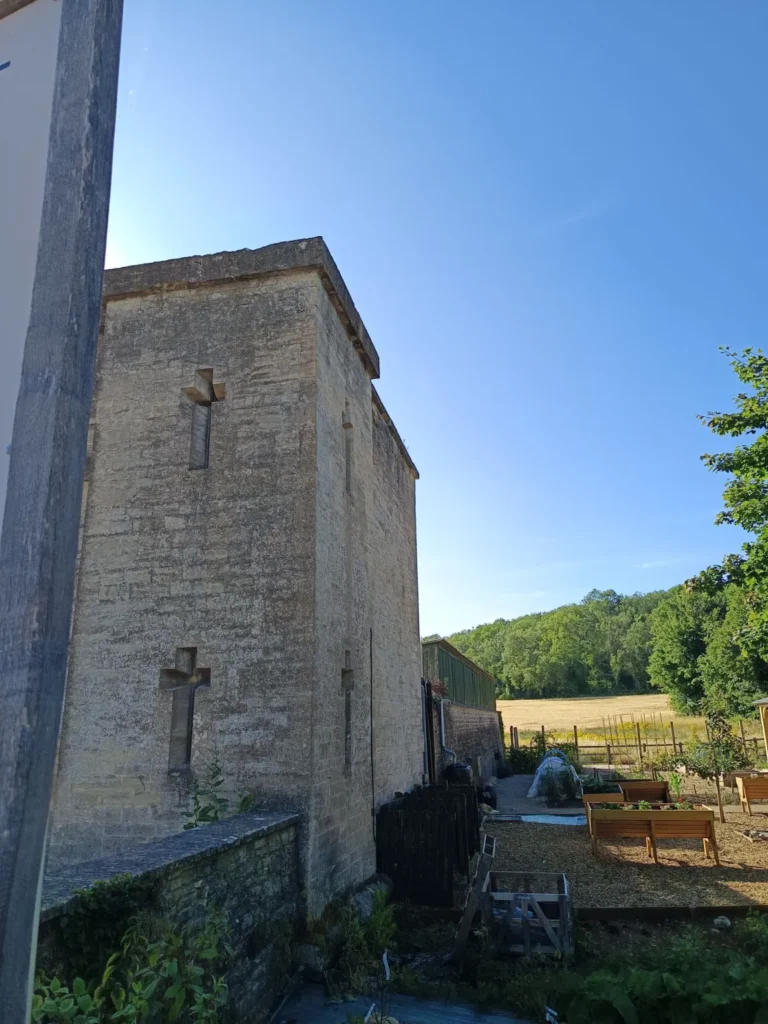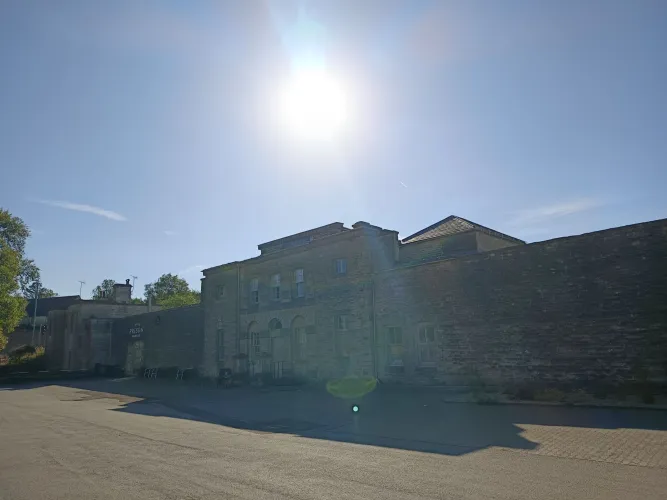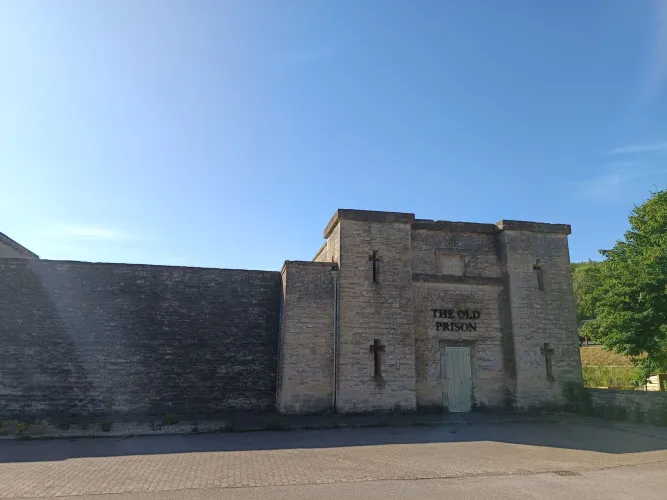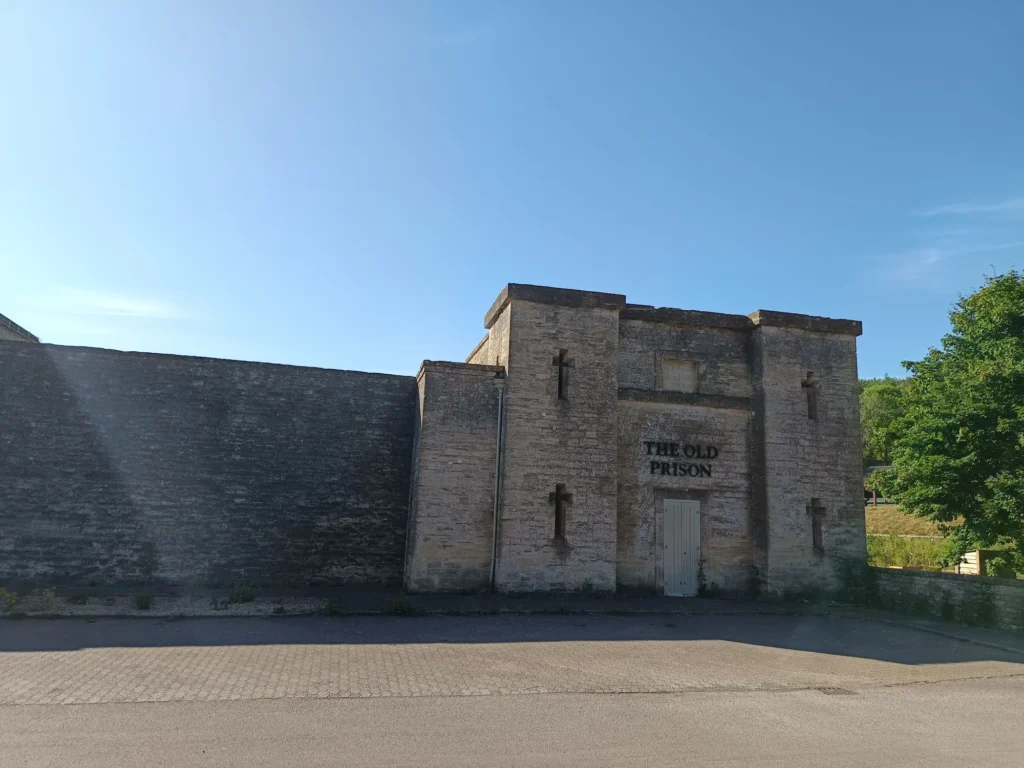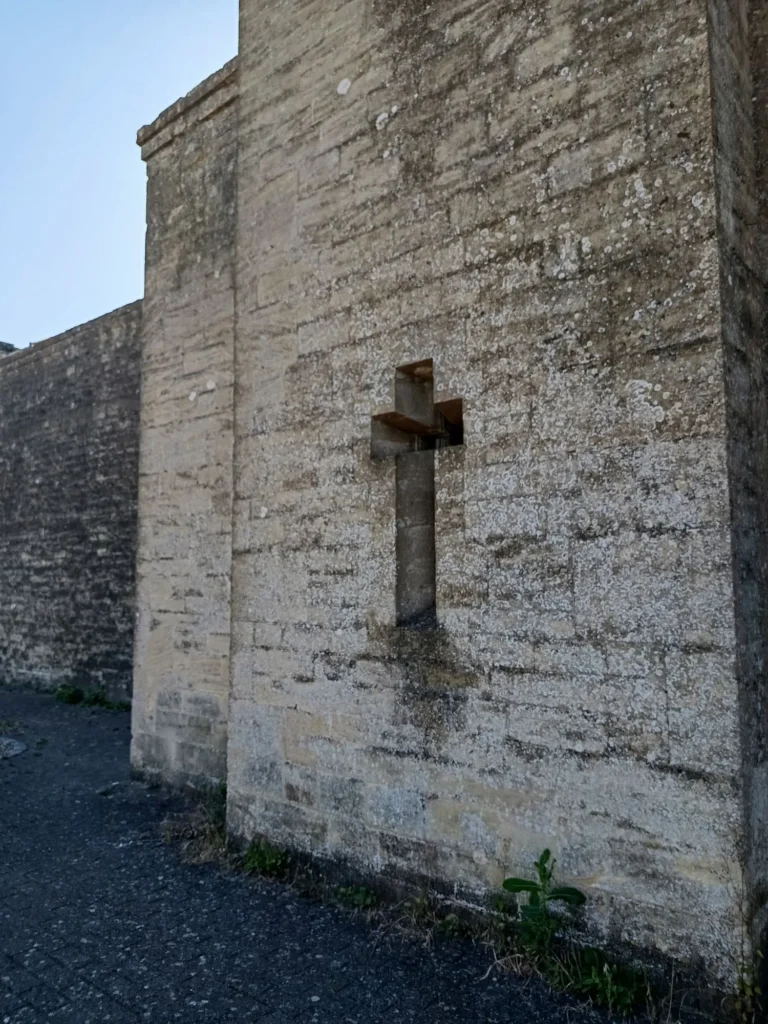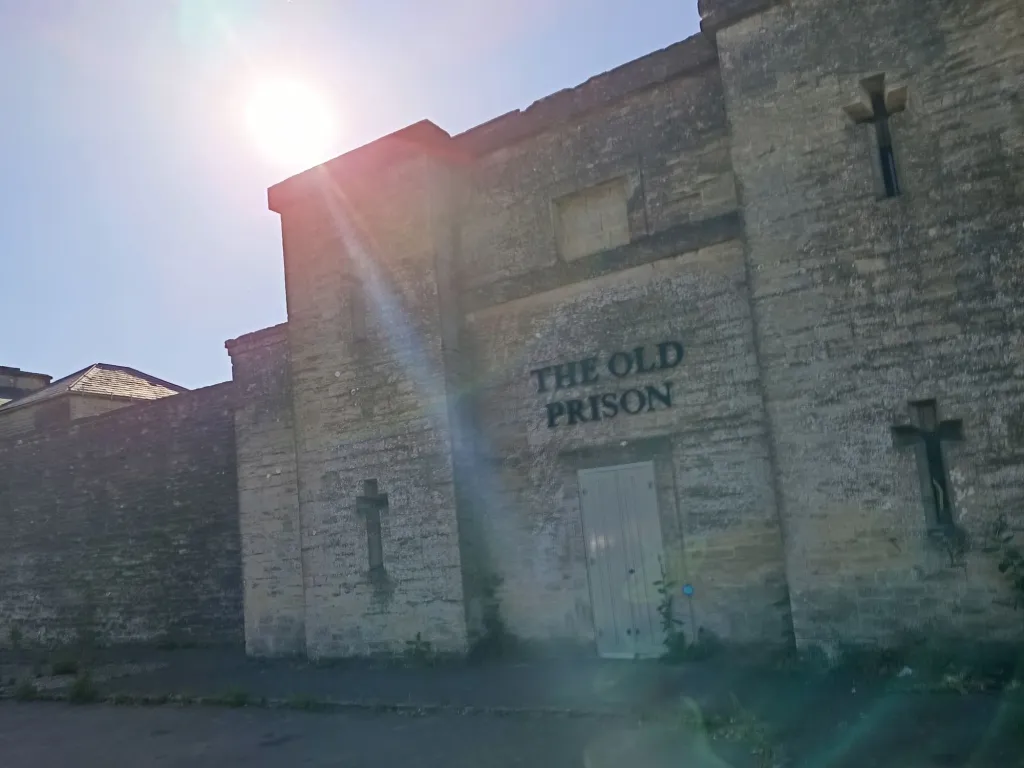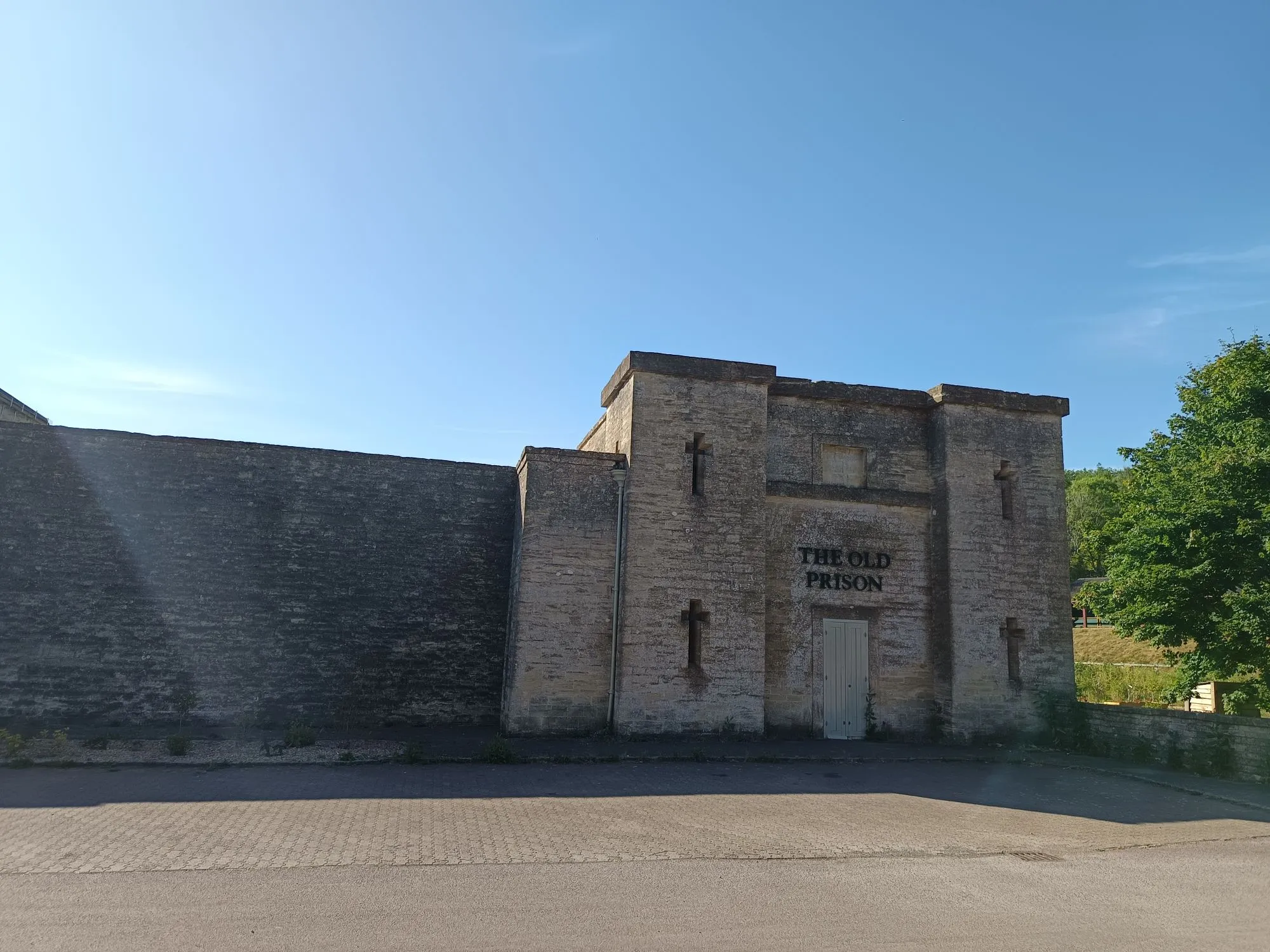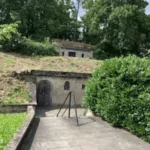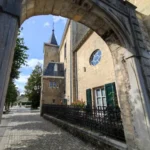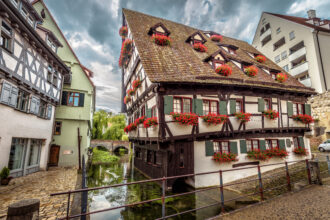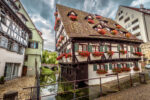The Old Prison in Northleach is located in the heart of the Cotswolds, just off the busy A429 between Cirencester and Stow-on-the-Wold. It lies at the head of the River Leach, nestled in a valley with beautiful hills rising up on either side. The contrast between the building and the surrounding landscape makes it impossible to miss. And it’s not to be missed. This is a building with a fascinating history that is worth exploring. The story begins in the late 18th century, with the visit of the famous prison reformer John Howard to the county jail in Gloucester. Howard was appalled by the conditions he found there, even though the county jail was typical of the time. Howard’s visit to Gloucester and many other county and city jails sparked a national criminal justice reform movement as local magistrates began to make improvements to the facilities under their control. Between approximately 1780 and 1800, around 60 prisons were either built or rebuilt in England and Wales, many of them incorporating the principles of design and management advocated by John Howard. In Gloucestershire, the cause was taken up by a local wool manufacturer, Sir George Onesiphrous Paul. In 1780, Paul was appointed High Sheriff of the county, which gave him responsibility for the county prison. He began to take a keen interest in the subject of imprisonment and campaigned for the reform of county prisons. In August 1783, Paul presented his reform plan to the county magistrates. It included the construction of a new county prison in Gloucester, part of which was to serve as a penal institution, and the establishment of four reformatories in Littledean, Horsely, Lawfords Gate, and Northleach. The scheme served as a model for magistrates in other counties. The Northleach Bridewell, or reformatory, opened in 1792. The first buildings included a warden’s house, a reception room, a chapel, and accommodation for prisoners spread over three blocks. Each prisoner was given two cells – a night cell for sleeping and a day cell where they were expected to work. In the early years, work included picking wool, carding, and spinning. Some prisoners who had learned a trade were allowed to practice it within the prison, such as tailoring and shoemaking. The need for harder work for prisoners led to the introduction of a treadmill in 1827. Prisoners took turns on the treadmill – only 9 or 10 could be accommodated on the machine at a time. While they ran, their comrades were kept in an adjacent courtyard, where they walked in circles and waited for their turn. In 1840, a new, more effective treadmill was installed in a new mill house in the southern corner of the grounds. Four years later, a new block for female prisoners, the North House, was added to the prison after the accommodation for women had been declared inadequate. The block contained six cells, each with a toilet. Women in prison had to clean, do laundry, sew, and cook. Despite these “improvements,” prison inspectors continued to find fault with the buildings and the regime. In 1850, John Perry criticized the location of the prison: “somewhat low-lying and with a stream of water flowing beneath it.” The punishment cell posed a serious danger to life, and the male prisoners’ cells were difficult to heat and lacked adequate ventilation. The chapel was “awkwardly constructed.” However, the decline of the prison was the result of the development of the railway in the Cotswolds, which made travel between courts and prisons much easier and faster. In 1857, the county council decided to close the prison in Northleach as it was no longer necessary. Convicted criminals were no longer sent here, but a small number of remand prisoners continued to be housed. In 1859, the reception room at the front of the prison was converted into a magistrates’ court for the district. It then made sense to use another part of the Old Prison to house a new county police station. James Medland, the county surveyor for Gloucestershire, was commissioned to lead the conversion. The mill house was converted into the publicly accessible police station. The sign can still be seen above the door. Police officers with families were housed in the mill house and the former chapel. A police dormitory was created on the top floor of the north block. The superintendent, who also served as warden of the reformatory while remand prisoners remained on the grounds, was given accommodation in the old warden’s house. Finally, the south block house was converted into emergency accommodation for homeless people. The emergency accommodation closed in the 1930s. By the end of that decade, the district council had demolished a large part of the prison. Only the gatehouse, the mill house, and the north house remained. The police station remained in the Old Prison until 1973, when a new police station and two police houses were built in Northleach. In 1974, Northleach Magistrates’ Court was merged with that in Stow-on-the-Wold, and the courtroom in the Old Prison was closed. Now a Grade II listed building, the remains of Northleach Prison were protected from further demolition. In the late 1970s, through the efforts of philanthropist Olive Katherine Lloyd-Baker, it became a museum of rural life. The museum closed in 2002, and the district council, which owned the property, began looking for a buyer. In 2013, the Friends of the Cotswolds purchased the site and spent several years transforming it into a visitor center in the heart of the Cotswolds. Today, the Old Prison continues to house the Lloyd-Baker Collection. It also has an excellent restaurant that caters to both locals and tourists. The cells in North House, the former women’s prison, have been restored and opened to the public. The magistrates’ courtroom is currently being restored. During my visit to the Cotswolds, I also passed by this historic building, which is said to be haunted, which is why paranormal teams have conducted investigations there, and made a short stop there. The building is truly impressive and allowed me to delve deep into the history of English prisons.
